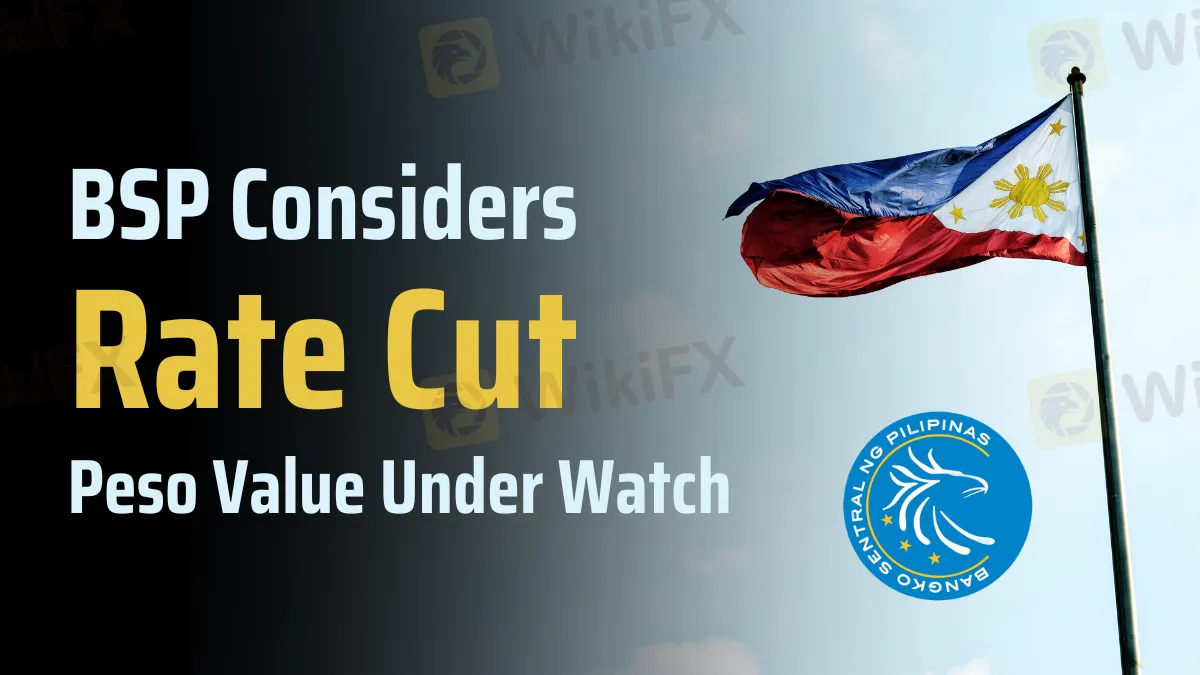BSP Considers Rate Cut, Peso Value Under Watch
abstrak:Banko Sentral ng Pilipinas Governor hints at a possible rate cut before the US Federal Reserve, affecting the peso's strength.

On Tuesday, Eli Remolona, Governor of the Bangko Sentral ng Pilipinas (BSP), said that the central bank might lower its base rate before the Federal Reserve starts its easing cycle. The move comes at a time when the Philippine peso is under a lot of pressure against the US dollar. It has dropped below 58 per dollar, which is its lowest level in 19 months.
Remolona made it clear that the BSP is prepared to intervene when the peso is under pressure but that the central bank does not typically participate in the foreign exchange market every day. “We intervene to express our view of where the peso should be going,” he said.
In 2024, the peso has lost 5.8 percent of its value against the dollar so far. At 6.50 percent, the base policy rate is at its highest level in 17 years. Still, Remolona said again that the BSP might lower rates before the Federal Reserve, which shows that people are more confident in their ability to keep inflation under control. It's because inflation is expected to fall within the BSP's goal range of 2% to 4% this year, after going above this range for two years. This has made the central bank less “hawkish.”
The BSP has kept its base rate steady at recent policy meetings, but there are signs that the rate could go down by 25 basis points as early as August. Another cut of the same size is expected in the fourth quarter. The market thinks that the Federal Reserve might not start lowering interest rates until December, which is different from this position.

Finance Secretary Ralph Recto recently talked about the chance of a 150 basis point rate cut over the next two years. Remolona played down those statements, saying that such a move would be “too aggressive” given the current growth path of the economy. “For that to happen, I think there should be a risk of a hard landing,” he said.
The Philippines' economy rose by 5.7% in the first quarter of 2024, which was a little better than the previous quarter but still less than what was expected. This modest growth shows how hard it is for officials to find the right balance between needing to boost the economy, keeping inflation under control, and keeping the currency stable.
The BSP needs to know about the possible rate cuts and when they might happen in order to deal with these economic problems. Too early of a cut could make it harder to keep inflation in check, and too late of a cut could slow down economic growth.
The central bank's actions show a careful balancing act, as they try to help the economy revive without making inflation worse. The actions of major central banks like the Federal Reserve also have an effect on the BSP's choices when it comes to world economic trends. The BSP and the Fed have different monetary strategies, which can have a big effect on the value of the peso and the Philippines' economy as a whole.
The things Governor Remolona said show that the BSP is cautiously optimistic about the country's economic chances and ready to change its monetary policy as the economy changes. Market players and officials will both be paying close attention to the BSP's policy choices as it continues to keep an eye on inflation and the economy.
The Philippine financial markets will need to be stable, and the economy will need to grow steadily. This will depend on how well the central bank handles these problems.
Check the latest news in the financial market here.

Broker ng WikiFX
Exchange Rate
